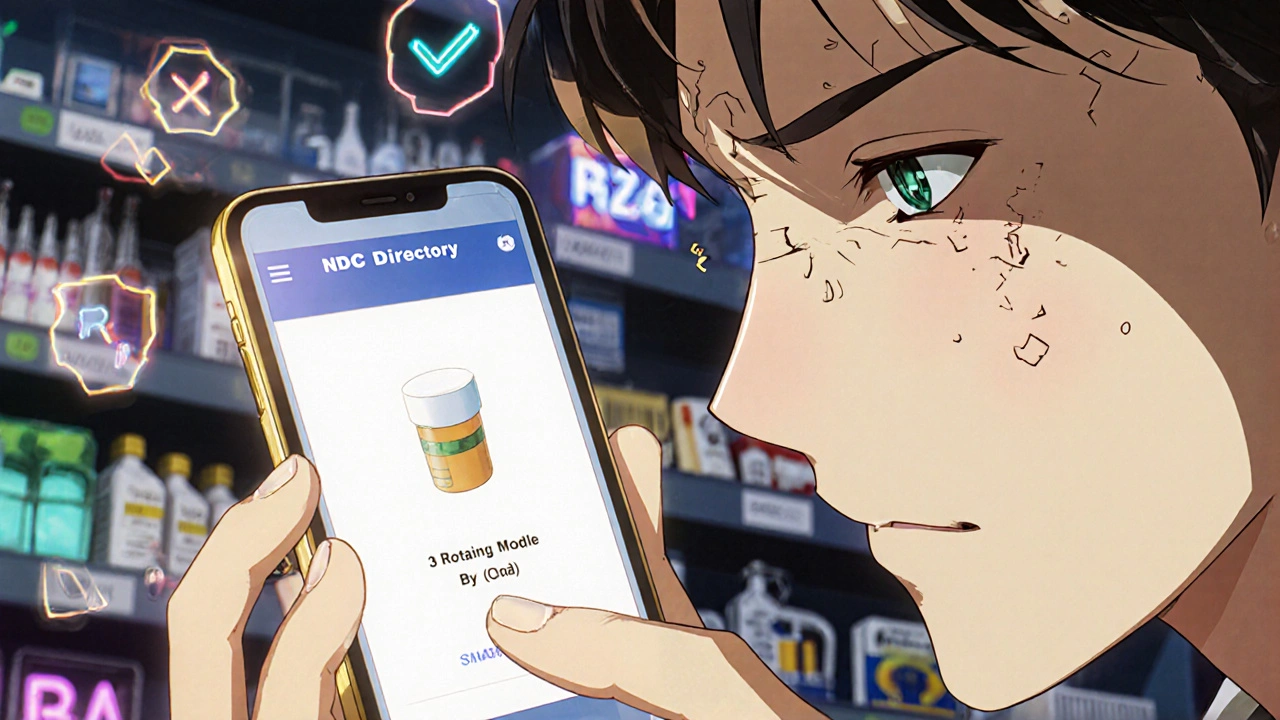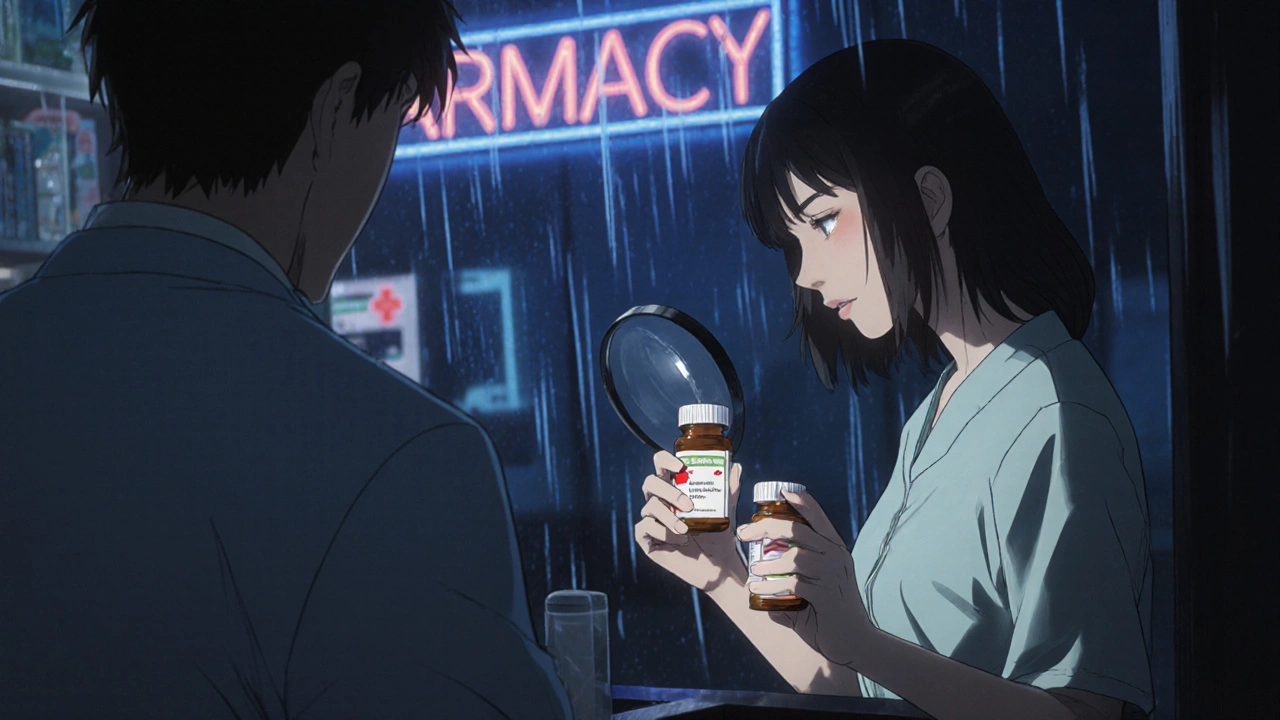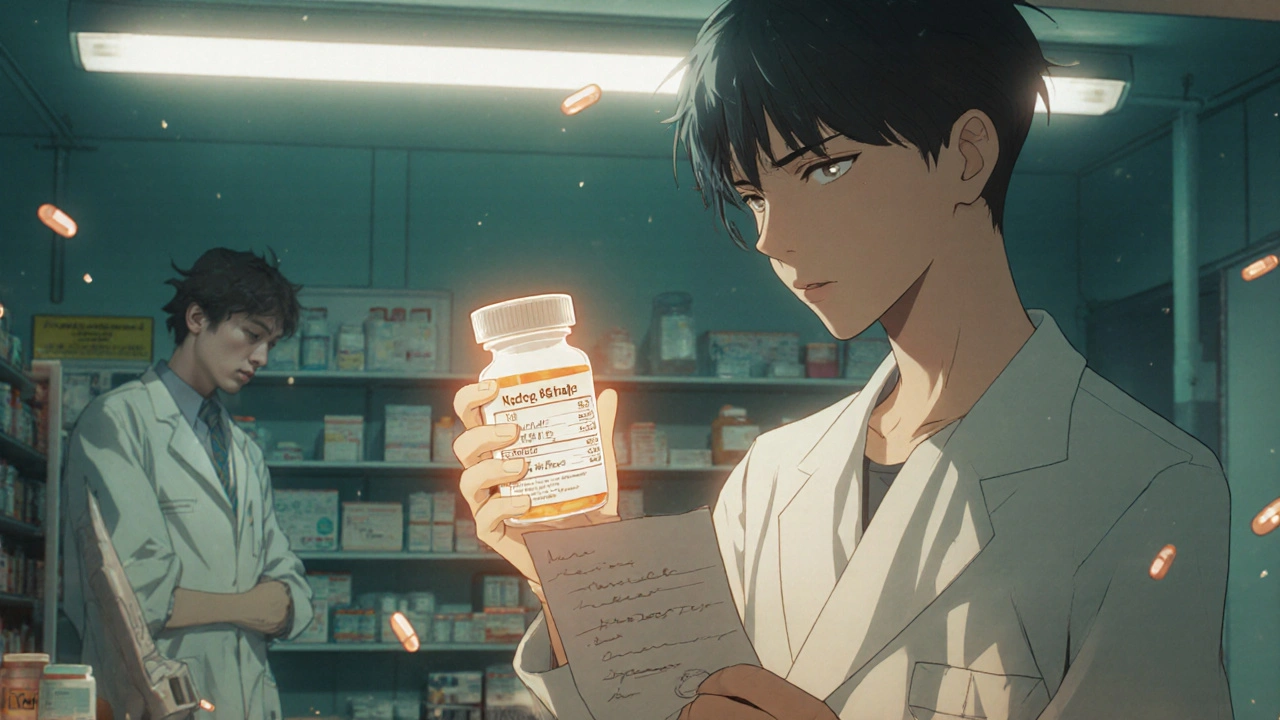Don’t Just Take It-Check It
You walk up to the counter, the pharmacist hands you a bottle, you say thank you, and walk out. But what if that pill isn’t yours? What if the dose is wrong? Or worse-what if it’s not even the right medicine? Every year, over a million people in the U.S. are harmed by medication errors, and many of them happen right at the pharmacy counter. You’re not supposed to catch them. But you can. And you should.
What You Need to Check Before Leaving the Pharmacy
Verifying your prescription isn’t optional. It’s your last line of defense. Here’s what to look at, step by step.
- Your name and date of birth - Make sure they match your ID exactly. Misspellings, middle initials missing, or wrong birth years are common errors. One in five errors involve the wrong patient getting someone else’s medication.
- The drug name - Is it what your doctor told you? If you were prescribed amoxicillin but see “amoxicillin-clavulanate,” that’s different. Generic names can be confusing. Ask: “Is this the same as what my doctor wrote?”
- The strength - Did they give you 500 mg or 250 mg? Dosage errors cause nearly 35% of all prescription mistakes. Look at the label: “500 mg” or “500mg” - it should match your doctor’s instructions word for word.
- The quantity - If your doctor ordered 30 pills, do you have 30? Count them. One in ten errors involve too many or too few pills. Don’t wait until you’re home. Count now.
- The instructions - “Take one by mouth daily” sounds simple. But what does “daily” mean? Morning? Night? With food? If the label says “QD” or “BID,” ask what that means. Abbreviations like these are a leading cause of confusion.
- The expiration date - Check the bottle. Expired meds don’t just lose strength-they can become unsafe. One in 25 recalled medications reach patients because of outdated stock.
- The NDC number - That long string of numbers on the label is the National Drug Code. It’s unique to that exact drug, strength, and manufacturer. You can look it up on the FDA’s website on your phone. If it doesn’t match the drug you expect, speak up.
Why This Matters More Than You Think
Pharmacists are trained to catch errors. But they’re busy. A single pharmacist might fill 150 prescriptions in a day. Barcode scanners help-87% of pharmacies use them-but they’re not perfect. If the wrong bottle is scanned, the system still approves it.
Research shows that when patients check their meds before leaving, they catch 37% more errors. That’s not a small number. That’s 37% of people who avoid a hospital visit, a bad reaction, or worse.
One woman in Ohio caught a mix-up because she noticed her blood pressure pill looked different. The pharmacy had given her someone else’s prescription-same size, same color, same bottle. She asked. They apologized. She saved herself from a dangerous drop in blood pressure.
And it’s not just about pills. Liquid meds, inhalers, patches, injections-all need checking. If you’re given a liquid antibiotic and expect a capsule, that’s a red flag.

What to Say When Something Feels Off
You don’t need to be rude. But you do need to be clear.
Try these phrases:
- “I’m sorry, but this doesn’t look like my usual pill. Can we double-check?”
- “My doctor said this was 500 mg, but the label says 250. Is that right?”
- “Can you show me the bottle from the shelf? I’d like to see what it looks like.”
- “Can you explain what this is for and how I take it?”
Pharmacists are trained to welcome these questions. In fact, 92% of them say they actively encourage patients to verify their meds. But if you get pushback? That’s a warning sign.
According to CMS data, 63% of patients who raised concerns were told to “just take it” or “don’t worry.” That’s not safety. That’s negligence.
What If You’re Not Sure?
Don’t guess. Don’t assume. Don’t risk it.
Call your doctor’s office. They can confirm the prescription. Most have a nurse line you can call after hours.
Use your phone. Take a picture of the label. Open the FDA’s NDC Directory app or search the NDC number online. Compare it to what your doctor wrote.
Use a magnifying glass if the print is too small. Most pharmacies have them. Ask for one. It’s free.
And if you’re on multiple medications? Bring your list. Show it to the pharmacist. They can spot interactions you might miss.
Mail-Order and Online Pharmacies Are Riskier
Getting meds delivered? That’s convenient-but it removes the human check.
Studies show mail-order pharmacies have 40% more errors than in-person pharmacies. Why? No face-to-face verification. No chance to see the bottle. No one to ask.
When your mail-order prescription arrives:
- Open it in front of a mirror or with someone else.
- Compare it to your last refill.
- Check the NDC number and expiration date.
- If anything’s off, call the pharmacy immediately. Don’t wait to take it.
And never let someone else pick up your prescription unless they’re a trusted family member. The pharmacy needs to confirm your identity before handing it over.

What’s New in Pharmacy Safety (2025)
Pharmacies are getting smarter. By 2025, most major chains will have tablet stations where you can scan your prescription and see a picture of the actual pill before you leave. CVS and Walgreens already offer this in nearly 40% of locations.
The DSCSA law now requires every pill bottle to have a unique digital code with the drug name, lot number, and expiration date. That’s meant to stop counterfeit meds.
And the FDA now requires all prescriptions to include the reason for the drug on the label-like “for high blood pressure” or “for infection.” That’s new. Use it. If the reason doesn’t match what you were told, ask why.
What You Can Do Today
Don’t wait for a mistake to happen. Start today.
- Before you go to the pharmacy, write down your meds: name, dose, frequency, reason.
- Bring that list with you.
- When you get your prescription, take 90 seconds to check the label.
- Count your pills. Look at the expiration date.
- Ask two questions: “What is this for?” and “What should I do if I miss a dose?”
- If something feels wrong, say so. Don’t leave until it’s cleared up.
It takes three minutes. That’s less time than it takes to check your phone. But it could save your life.
It’s Not Just About Pills-It’s About Trust
Pharmacists are your allies. But trust doesn’t mean silence. Real trust means asking questions. It means being involved. It means knowing your own body and your own meds.
Studies show pharmacies with higher patient satisfaction scores are also the ones with fewer errors. Why? Because patients feel safe asking. And pharmacists feel safe answering.
So next time you get your prescription, don’t just take it. Check it. Ask. Confirm. Stay alert. You’re not just a customer. You’re the final safety check. And no one else can do that for you.
What should I do if I notice a mistake on my prescription label?
Stop. Don’t take the medication. Ask the pharmacist to double-check the prescription with your doctor’s office. If they dismiss your concern, ask to speak to the pharmacy manager. Document the error-take a photo of the label-and report it to the FDA’s MedWatch program. You have the right to safe medication.
Can I ask to see the original bottle the pills came in?
Yes. You have the right to see the container the medication was dispensed from. Many pharmacies keep the original bulk bottle on hand. Ask the pharmacist to show it to you. The NDC number, manufacturer, and lot number should match what’s on your label.
Why does my generic pill look different from last time?
Generic drugs can look different because they’re made by different manufacturers. The active ingredient is the same, but the shape, color, or markings may change. Always check the name and strength. If you’re unsure, ask the pharmacist to confirm it’s the same medication. Never assume it’s safe just because it’s generic.
Should I verify my prescription even if I’ve been taking it for years?
Yes. Medications change. Your dose may be adjusted. A new batch may come from a different supplier. Even long-term users are at risk-especially if your doctor changed your prescription without telling you. Always check. It’s not about distrust. It’s about safety.
What if the pharmacy won’t let me count my pills?
That’s a red flag. Counting your pills is a basic safety step. If they refuse, ask why. If they still won’t allow it, go to another pharmacy. Your safety matters more than convenience. You can report unsafe practices to your state pharmacy board or the FDA.
How do I know if my prescription is for a controlled substance?
Controlled substances include opioids, sedatives, stimulants, and some anxiety meds. The label will say “C-II,” “C-III,” or similar. Pharmacists must verify your ID and sometimes your address for these. If you’re getting one and they didn’t ask for ID, that’s unusual. Ask why. You have the right to know.
Can I use my smartphone to verify my medication?
Yes. Use the FDA’s NDC Directory website or apps like Medscape or Epocrates. Take a picture of the label, then search the NDC number. You can also use your phone’s camera to zoom in on tiny print. Many apps even show images of the pill so you can compare. This is a quick, free way to confirm you have the right drug.
What should I do if I accidentally took the wrong medication?
Call your doctor or pharmacist immediately. If you’re having symptoms like dizziness, nausea, chest pain, or trouble breathing, call 911 or go to the ER. Don’t wait. Bring the bottle with you-even if you think you took the right one. Sometimes, the wrong pill can cause delayed reactions.

Alyssa Torres
November 19, 2025 AT 16:19